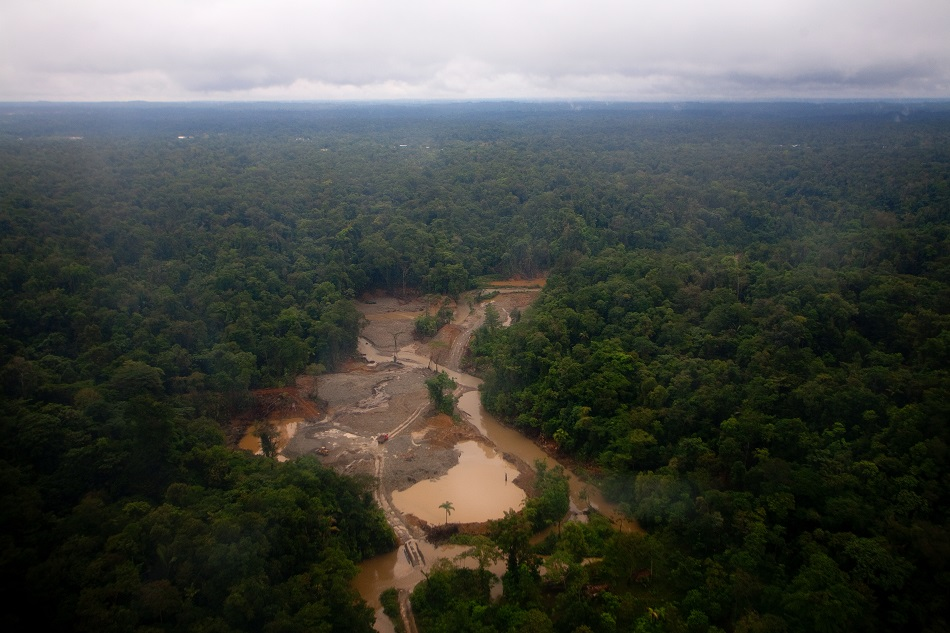Aug 9 2012

Image Credit: Juan Manuel Barrero Bueno/Shutterstock.com
Colombia is located in northern South America and borders the Caribbean Sea between Venezuela and Panama, and the North Pacific Ocean between Ecuador and Panama. It covers an area of 1,141,748 km2. The population of the country is 48,258,494 according to July 2019 estimates. It has a tropical climate along the coastal region and eastern plains and is cooler in the highlands.
Colombia has vast natural resources, such as emeralds, copper, gold, nickel, iron ore, steel, natural gas, limestone and, petroleum. In the second quarter of 2019, the country’s GDP increased by 3% year-on-year. Mine exploitation contributed about 5.08% to Colombia’s GDP in the same year.
Economic development in the country has been hit by inadequate infrastructure and severe flood damage during the past. However, the country’s economic policies and free trade agreements have enabled Colombia to overcome the challenges that resulted from the economic downturn.
Overview of resources
Colombia is rich in mineral resources such as coal, gold, iron ore and steel, crude petroleum, natural gas, platinum, nickel, limestone, copper, and silver.
In 2015, Colombia was:
- The second-largest producer of coal in the western hemisphere, after the USA
- The fourth-largest producer of petroleum in Latin America
It is also a significant producer of nickel (contributing almost 3% to the world’s production). Colombia was the only producer of platinum in Latin America and is recognized globally as a source of high-quality emeralds
Metals
Colombia has abundant reserves of gold and nickel. In 2010, the nickel production in Columbia decreased by nearly 5% compared to the total output in 2009, owing to the replacement of a furnace at the Cerro Matoso reserve to enhance operational reliability. Afterward, the reserve was estimated to have 48 Mt of laterite ore grading 1.3% nickel and nearly 65 Mt of other ores. In 2015, the mine produced 40 Kt of Nickel.
In 2015, Antioquia, one of Colombia’s north-western regions, mined 21.5 tons of gold; production levels have remained steady since the resurgence during the late 90s and 2000s.
Fossil Fuels
In 2015, the departments of Cesar and La Guajira produced a total of 79.1 Mt of coal, equating to almost 93% of the country’s production. Two major coal miners dominated this production; Drummond Ltd. and Carbones del Cerrejón LLC. Petroleum production climbed to 367.1 Mbbl, an increase of around 1.5% compared to the prior year. Compared with 2014, there were fewer oil rigs than in 2015 with only 12 active rigs, partly because of low oil prices.
Investment
Foreign investment in Columbia was badly hit for several decades due to widespread endemic violence. However, the mid-2000s saw the country’s mining industry experience rapid growth, owing to improved security and increased commodity prices. Government tax breaks were introduced along with investment incentives to attract foreign investors, resulting in a nine-fold increase in foreign investments in the decade leading to 2011.
In other attempts to recover confidence with foreign investors and also protect the country’s interests, the government of Columbia introduced a new regulatory scheme that will exercise tighter controls on investment in the mining sector. New mining codes are planned that will ban mining in protected areas and layout stringent bidding rules. Colombia has always resisted exploitative mining companies, whose large-scale mining activities drastically affect the environment and communities. Experts feel that the voluntary guidelines laid out by the government in an attempt to curb irresponsible corporate mining are inadequate and a stricter law preventing environmental damage caused by mining is required.
Nevertheless, the sector is still experiencing a period of uncertainty, partly caused by legal instability from decisions being made at a judicial and administrative level. The courts are going to make an unprecedented decision on future mining consultations, which could mean public input on whether to veto or support mining extractions.
Following 2017 reports, the country ranked third amongst the South American nations in terms of GDP. Columbia’s mining sector is likely to remain strong in the coming years, provided stricter environmental safeguards and more investor-friendly policies are implemented.
Sources and Further Reading
This article was updated on 3rd March, 2020